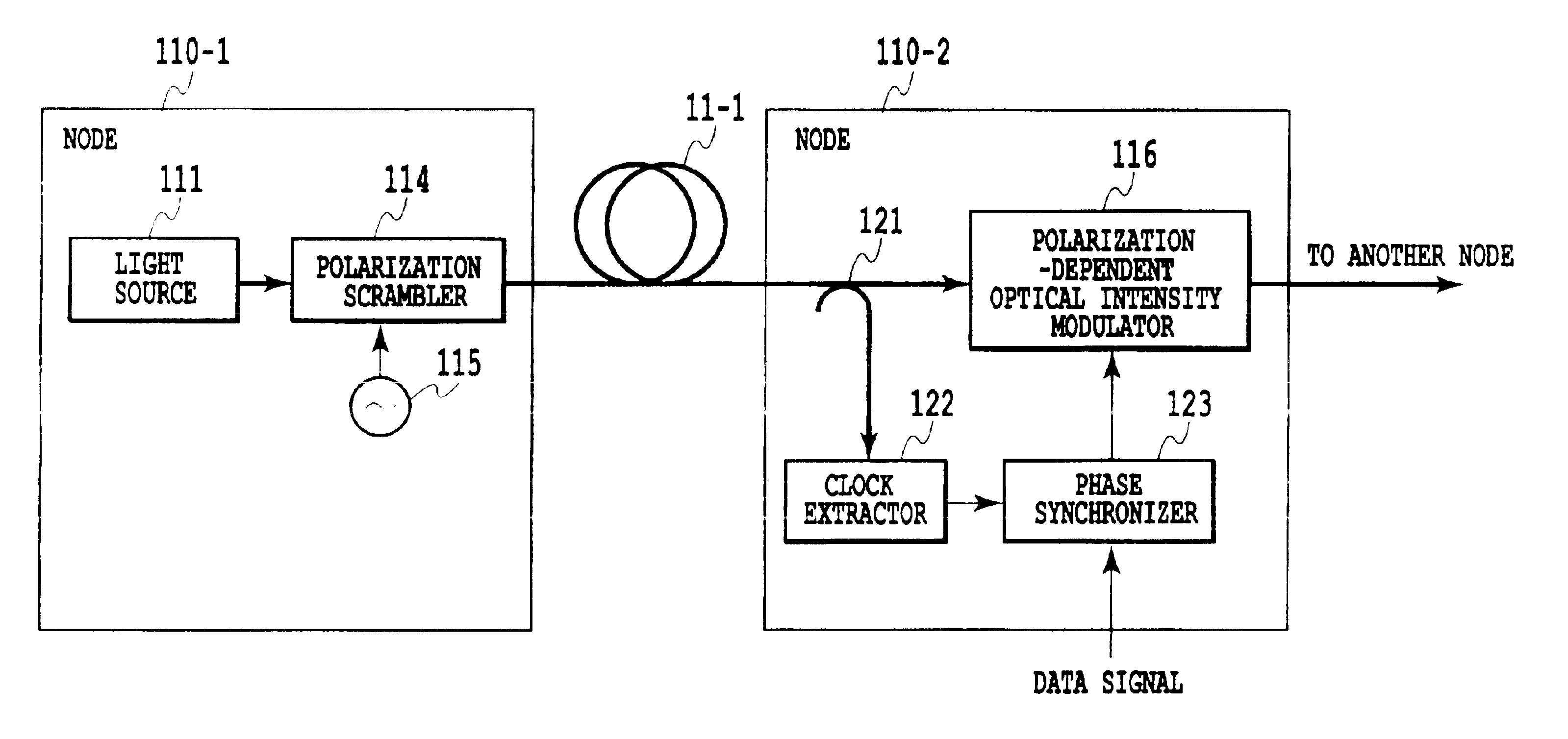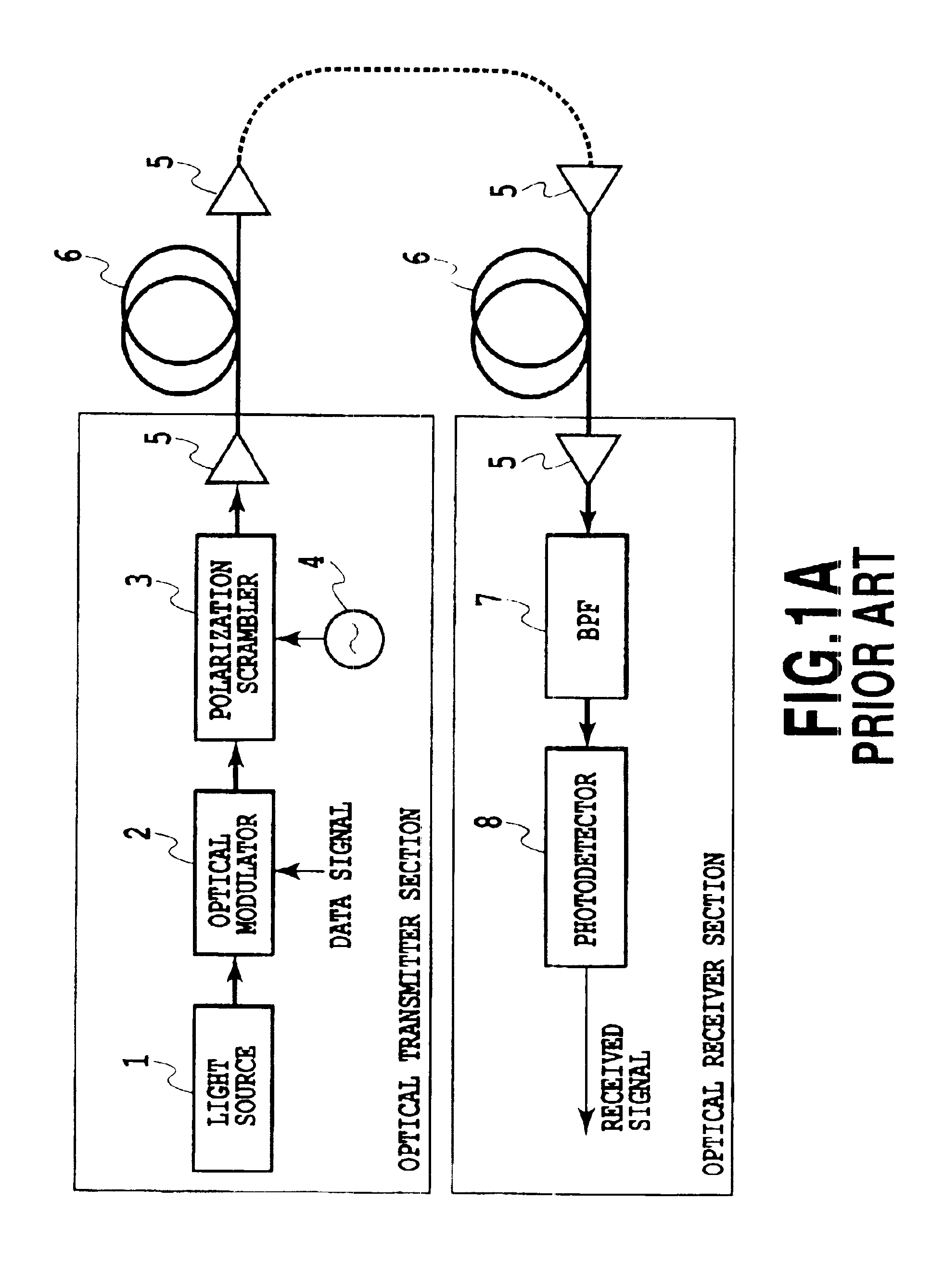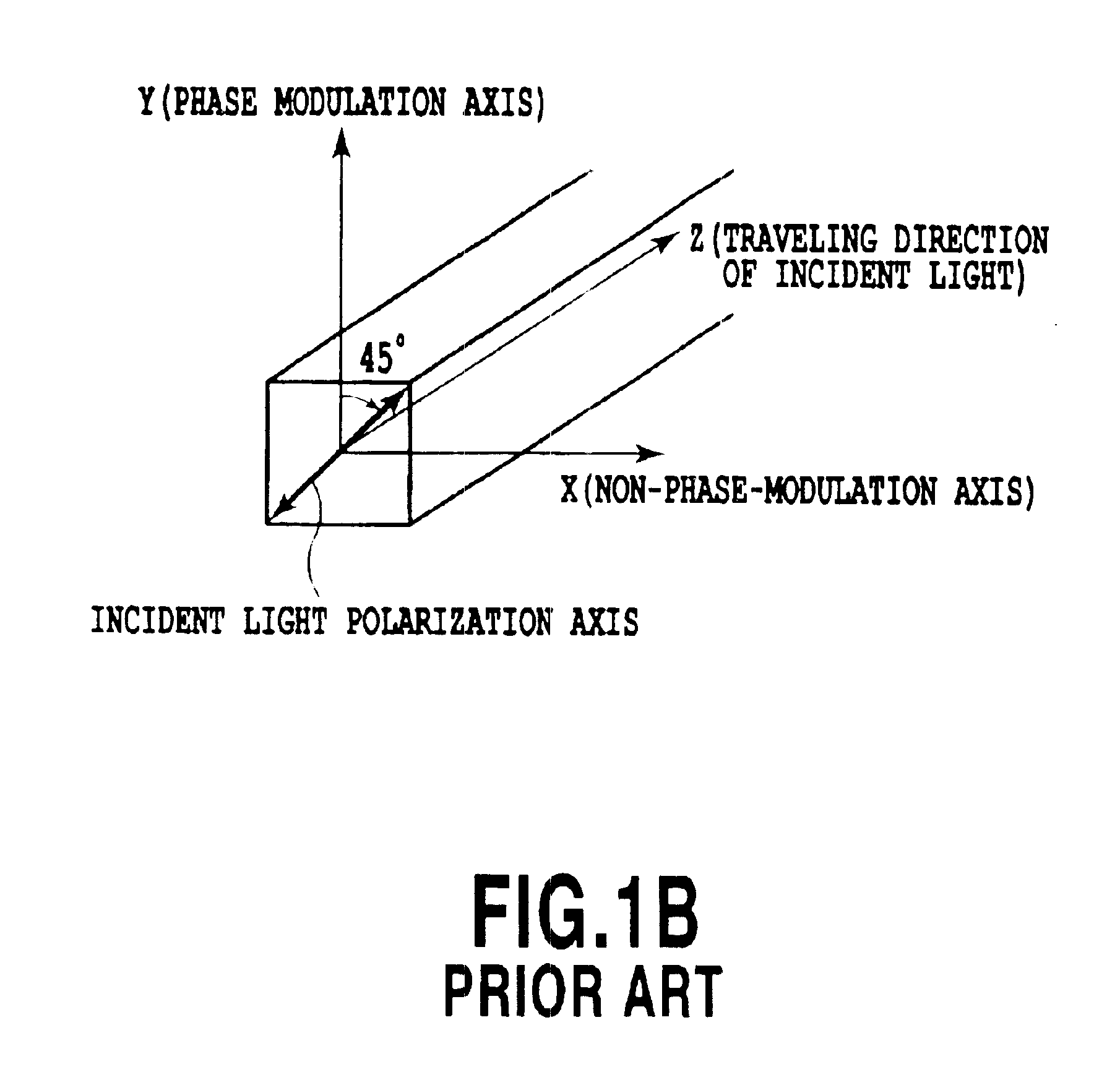Polarization scrambler and optical network using the same
a scrambler and optical network technology, applied in multiplex communication, wavelength-division multiplex systems, instruments, etc., can solve the problems of hindering an increase in the spectrum density of wdm signals, reducing the received optical power, and significantly degrading the signal to noise ratio (snr), so as to suppress the spread of optical spectrum, suppress the jitter of modulated signal light, and suppress the effect of optical spectrum
- Summary
- Abstract
- Description
- Claims
- Application Information
AI Technical Summary
Benefits of technology
Problems solved by technology
Method used
Image
Examples
third embodiment
(Third Embodiment)
[0136]FIG. 18 shows a third embodiment of the first optical network of the present invention. The present embodiment is characterized in that at the node 110-2 according to the second embodiment, the optical splitter 121 is provided in front of the polarization-dependent optical intensity modulator 116 and a photodetector 125 converts signal light from the optical splitter into an electric signal so that a clock extractor 126 extracts a clock electric signal. The configuration of the node 110-1 is similar to that in the first embodiment.
[0137]With this configuration, even if a polarization scrambler without any temporal variations in intensity, e.g. the one shown in FIGS. 1A-1B and 3A-3C and using phase modulation is used, an output from the polarization-dependent optical intensity modulator 116 has its intensity modulated (this intensity modulation is different from that carried out by a data signal) owing to its polarization dependency. As a result, a clock elect...
fourth embodiment
(Fourth Embodiment)
[0138]FIG. 19 shows a fourth embodiment of the first optical network of the present invention. The present embodiment is characterized in that at the node 110-2 according to the second embodiment, a polarizer 127 is inserted between the optical splitter 121 and the photodetector 125 so that the photodetector 125 can convert scrambled light from the optical splitter 121 preceding the polarization-dependent optical intensity modulator 116, into an electric signal and so that the clock extractor 126 can then extract a clock electric signal. The polarizer 127 allows single polarization of the scrambled light to pass through. Accordingly, output light from the polarizer 127 is always subject to intensity modulation according to the frequency of the scrambled light. Consequently, even if for example, the polarization scrambler shown in FIGS. 1A-1B and 3A-3C and using phase modulation is used, a clock electric signal can be extracted easily from an output electric signal...
fifth embodiment
(Fifth Embodiment)
[0139]FIG. 20 shows a fifth embodiment of the first optical network of the present invention. According to the present embodiment, at the node 110-2 according to the fourth embodiment, by limiting the configuration of the polarization scrambler 114, a clock electric signal can be extracted using the photodetector 125 and the clock extractor 126 and without using the polarizer 127. An example of configuration of the polarization scrambler 114 used in this embodiment will be shown below.
(First Example of Configuration of Polarization Scrambler)
[0140]FIGS. 21A, 21B, and 21C show an example of configuration of the polarization scrambler 14 according to the fifth embodiment.
[0141]In these figures, the polarization scrambler 114 is composed of an optical intensity modulator 131 that modulates a CW from the light source 111 using a sinusoidal signal from the oscillator 115, an optical splitter 132 that splits each output optical pulse from the optical intensity modulator ...
PUM
 Login to View More
Login to View More Abstract
Description
Claims
Application Information
 Login to View More
Login to View More - R&D
- Intellectual Property
- Life Sciences
- Materials
- Tech Scout
- Unparalleled Data Quality
- Higher Quality Content
- 60% Fewer Hallucinations
Browse by: Latest US Patents, China's latest patents, Technical Efficacy Thesaurus, Application Domain, Technology Topic, Popular Technical Reports.
© 2025 PatSnap. All rights reserved.Legal|Privacy policy|Modern Slavery Act Transparency Statement|Sitemap|About US| Contact US: help@patsnap.com



